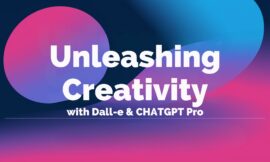Creating content that ranks on Google’s first page isn’t just about keyword stuffing or clever titles. The real secret lies in writing NLP-friendly content that Google’s algorithms can easily understand and prioritize. Here’s how embracing Natural Language Processing (NLP) can help you get Google to rank your content higher and faster.
What is NLP, and Why Does it Matter?
NLP, or Natural Language Processing, is a branch of artificial intelligence focused on helping computers understand human language. According to IBM, NLP gives computers the ability to process text in a human-like way, which allows Google to interpret user queries and rank content that best matches search intent.
“15% of daily search queries are brand new to Google. NLP enables Google to decode these unfamiliar questions.”
Google uses NLP to analyze words and context, so it knows the difference between “bass guitar” and “bass fishing.” This ability to distinguish meaning allows Google to serve the most relevant results, even if the search terms are ambiguous. NLP-friendly content makes it easier for algorithms to interpret and rank, especially for new or complex queries.
Writing NLP-Friendly Content
To write NLP-friendly content, keep these guidelines in mind:
- Use Clear Sentence Structures: Place the subject, verb, and object in straightforward order. For instance, instead of “To stop laptops from overheating, use cooling pads,” use “Cooling pads are effective for reducing laptop overheating.” This basic structure helps Google understand your content with minimal effort.
- Avoid Ambiguity: Choose clear, direct words instead of abstract phrases. For example, write “banana bread can be made healthier by substituting sugar with applesauce” rather than “make banana bread less unhealthy by using something else like applesauce.”
- Answer Search Queries Directly: When addressing a specific query, echo the question and answer it with clear units or details. For example, in an article answering “What is the best temperature to brew beer?” use the sentence, “The best temperature to brew beer is 68 to 72 degrees Fahrenheit.” This direct approach leaves no room for misinterpretation.
Testing NLP-Friendly Content
Does this approach really work? To test NLP’s effectiveness, run side-by-side tests. Publish two versions of the same article—one NLP-friendly, one not—and track their Google rankings over time. This way, you can observe how clarity and straightforward structure impact SEO performance.
Pro Tip: Balancing NLP-Friendliness and Readability
While NLP optimization focuses on clarity, a bit of engagement is also key. Aim for a balance: 60% focus on NLP-friendly structuring and 40% on engaging language. This combination ensures content that not only ranks well but also resonates with readers.
Advanced NLP Optimization
Beyond simple structuring, NLP optimization involves matching keywords and phrases from top-ranking articles to ensure Google recognizes your content as relevant. For instance, if you’re writing about “affiliate marketing,” mention common terms like “affiliate network” and “commission-based model” in NLP-friendly sentences. This will increase the likelihood of ranking well on Google.
Ready to Create NLP-Friendly Content?
To get started, use a prompt that instructs AI to follow an NLP-friendly format. Here’s a sample:
“ChatGPT, create content adhering strictly to NLP-friendly formats. Use simple, clear sentence structures with subject-verb-object order and avoid filler words. Prioritize clarity and simplicity.”
In today’s competitive SEO landscape, creating content that is both NLP-optimized and readable is essential for achieving top rankings. By following these tips, you’ll be well on your way to producing content that Google loves to rank.





